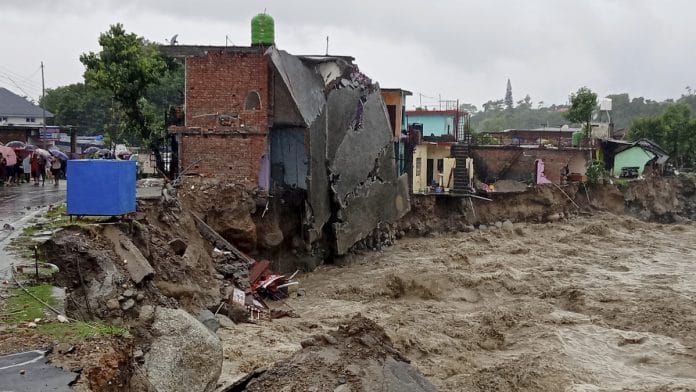New Delhi: The Intergovernmental Panel on Climate Change (IPCC) released its Sixth Assessment Report (AR6) Monday, and has predicted that India will suffer more frequent and intense heat waves as well as increased precipitation in the remaining decades of the 21st century.
Titled ‘Climate Change 2021: The Physical Science Basis’, the IPCC report is considered the most comprehensive report on human-induced climate change in the world.
“Heatwaves and humid heat stress will be more intense and frequent during the 21st century,” the report said about the South Asian region, which includes India, adding that “both annual and summer monsoon precipitation will increase during the 21st century”.
The report also observed that the Indian Ocean has warmed faster than the global average, warning that the “global warming of 2°C above 1850–1900 (pre-industrial) levels would result in the exceedance of numerous hazard thresholds for pathogens, seagrasses, mangroves, kelp forests, rocky shores, coral reefs and other marine ecosystems”.
It also noted that this has led to a loss of coastal area and the shoreline has also retreated.
In the Asian region, the report said “the observed mean surface temperature increase has clearly emerged out of the range of internal variability compared to 1850-1900. Heat extremes have increased while cold extremes have decreased, and these trends will continue over the coming decades”.
Internal variability refers to the movement of heat due to natural reasons.
Also read: These are the ‘code red’ warnings in IPCC climate change report, & why it matters
Climate change in the Asian region
India is affected by climate change in the entire Asian region. According to the report, south and southeast Asian monsoon and east Asian summer monsoon will be influenced by effects of internal variability.
“In the long-term, South and Southeast Asian monsoon and East Asian summer monsoon precipitation will increase,” it added.
“Given that India is one of the most climate-vulnerable countries, we must recognise that even geographically faraway climatic changes can have consequences for our monsoons and intensity of extreme events,” said Dr Arunabha Ghosh, CEO of the Council on Energy, Environment and Water (CEEW).
“Our focus should be on building climate-resilient physical and digital infrastructure along with inculcating social and behavioural changes in citizens and communities,” Ghosh noted in a statement.
The report further predicted that in the whole Asian region, marine heatwaves will continue to rise, fire weather seasons “will lengthen and intensify” and the regional-mean sea level will also continue to rise.
The global context
Climate change has affected every region on the planet and the report found that over the next 20 years, global temperature is expected to reach or exceed 1.5°C of warming.
Unless there are rapid and drastic reductions in emissions, limiting global warming by 1.5°C to 2°C will be beyond reach.
According to the report, emissions of greenhouse gases from human activities are responsible for approximately 1.1°C of warming since 1850-1900, the study finds.
“This report is a reality check. We now have a much clearer picture of the past, present and future climate, which is essential for understanding where we are headed, what can be done, and how we can prepare,” said IPCC Working Group I Co-Chair Valérie Masson-Delmotte in a statement.
(Edited by Rachel John)
Also read: From India to US to Turkey to China to Brazil, it’s not ‘crazy weather’ but climate change






